VOL.45, NO. 4
Now Playing with Coming Soon: Sweding, Fan Culture Collaboration, and the Adaptation of Movie Trailers within a Transmedia Industry
Matthew Ogonoski
In Michel Gondry’s 2008 film Be Kind Rewind, Jerry (Jack Black) accidentally erases the entire catalogue of VHS tapes contained in Mike’s (Mos Def) workplace. The failing and anachronistic rental store, owned by Mr. Fletcher (Danny Glover), is in dire need of repair and is also at risk of foreclosure due to the influence of local developers and the area’s encroaching gentrification: the erasure of the tapes ensures the store’s demise. In a unique, if misguided, attempt to replace the store’s catalogue, Mike decides to remake the films, casting Jerry and himself—and eventually the rest of the surrounding community—in the starring roles. With technical ingenuity, and materials collected from the surrounding locale, the protagonists recreate scenes from 2001: A Space Odyssey (an old fridge becomes the monolith), Robocop (car parts and flexible ductwork stand in for the title character’s exoskeleton), Ghostbusters (books attached to fishing line reproduce the effect of haunted, floating books from the film’s intro), among other iconic film moments. This Do-It-Yourself process of remaking films is given a name: “sweding.”
Since the release of Gondry’s film, sweding has become a popular form of DIY filmmaking commonly featured on social and entertainment-media websites, at multiple festivals worldwide, and as a creative component within the curriculum of numerous educational settings: in no small part due to its accessibility and economic viability. Distilled into its essential elements, the practice of sweding utilizes household items and craft supplies to remake feature-length films in abridged forms. A “sweder” might use a mop head as a makeshift wig, cardboard cutouts attached to bicycles to recreate a car chase scene, and any number of everyday objects—paper towel rolls, tissue paper, plastic bags—to dress misé en scene, clothe actors, and execute special effects (see Figures 1 & 2). Human voices reproduce music and sound design: scores are hummed, and sound effects are vocally mimicked. The vast majority of sweded films are captured, edited, and distributed by digital technologies.1
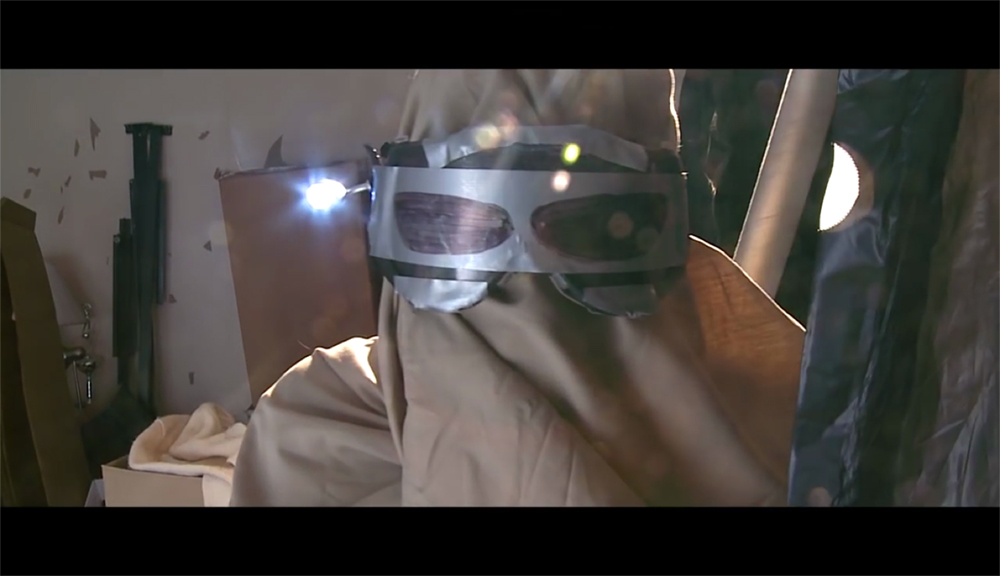
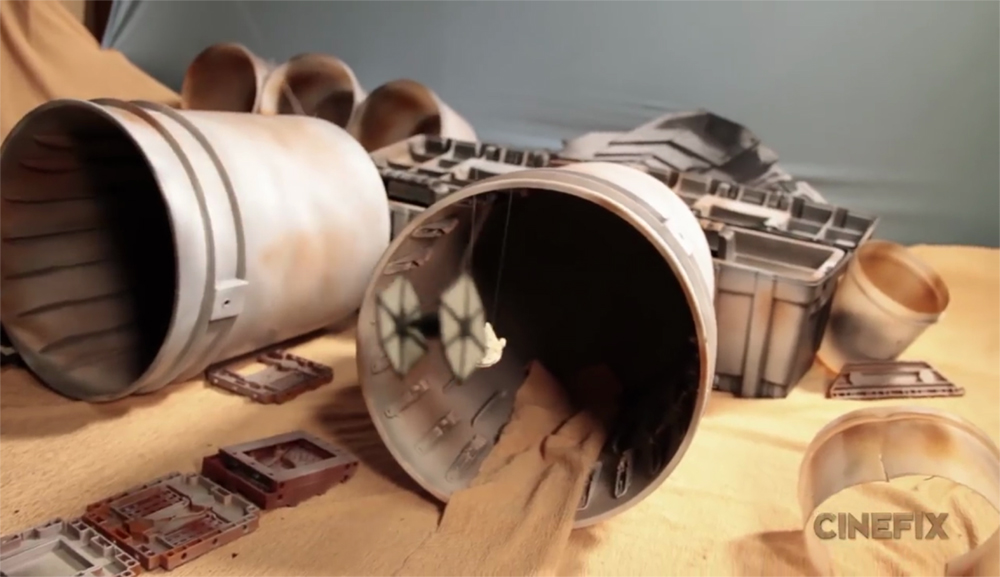
The typical duration of a “swede” is equal to that of a trailer or commercial spot. Moreover, sweded trailers—sweded films that mimic trailers shot-for-shot—share the generic stylistics and aesthetic markers of such advertisements. Thus, these films are akin to entryway paratexts. Borrowing from Gerard Genette’s theories of paratextuality—the examination of supplemental texts surrounding a primary text, including, but not limited to, book covers, introductions, reviews, and advertisements—Jonathan Gray defines entryway paratexts as promotional materials that characterize primary texts before their release (48). Unlike entryway paratexts, sweded trailers have traditionally fallen outside of typical commercial channels and publicity techniques, unsolicited and published only after a feature’s theatrical run. However, recent sweded trailer productions capitalize on the temporal cycles of industry-sanctioned promotion: swedes are released after a film’s trailer, but before a film’s theatrical release. This new release strategy emphasizes the increasing importance of contemporary trailer culture and consumption, and highlights the dubious narrative connections that entryway paratexts share with their source material. Furthermore, sweders’ playful engagements with these fragmentary texts demonstrates a creative autonomy that challenges the authorial determinacy and commoditization involved in the film industry’s typical strategies of intellectual property management: sweders appropriate and perpetuate free forms of content. Two such entities that have taken up these promotional cycles are Dumb Drum (DD) and Homemade Movies (HM). The former is a dedicated YouTube channel run by the founders of Swede Fest, and the latter is a playlist dedicated to producing swedes on CineFix’s YouTube-hosted website. As will be shown below, DD and HM’s adaptations of The Force Awakens (2015)—an intertextually rich soft-reboot of the Star Wars franchise—illustrate the multiplicity and complexity of adapting popular franchise promotional texts. By appropriating the very industrial protocols of film marketing, sweded trailer producers utilize expanded concepts of film adaptation to implicate themselves within the content flows of a highly exploitable transmedia industry.
(Re)Making History:
Gondry himself produced the first sweded trailer as part of Be Kind Rewind’s promotional campaign.2 From 2008 to 2011, Gondry’s is the only example of a sweded trailer that occupied the same promotional cycle as its referent film. Other sweded trailers of this time mainly engage with decades-old films—Robocop (1987), Jurassic Park (1993), Blade Runner (1982), etc.—and share a similar nostalgic impetus with the sweded films featured in Be Kind Rewind, such as 2001: A Space Odyssey (1968), Ghostbusters (1984), and Driving Miss Daisy (1989).3 From 2011 to 2014, the popularity of these unofficial promotional texts brought them closer into the official life cycles of industry-produced advertisements. The majority of this period’s sweded trailers use contemporary theatrical releases as their subjects, and a few examples were released before their referent films reached theatres. A post-2014 search of YouTube reveals that sweded trailer productions have become almost synonymous with sweding itself, and most sweded trailers are released during the same theatrical promotion campaigns as their referent films.
Sweded trailer production made this transition over the past decade as a result of trailer culture’s ascendency—particularly online—and an increase in modes of replay culture that directly benefited. Replay culture is a feature of convergence in which film properties are repackaged for the purposes of iteration and repetition, permitting opportunities for extended audience investment and participation: consumers might buy multiple versions of a film, adaptations in other media, ancillary products, or even create their own texts (Becoming Cult 3). Furthermore, as Barbara Klinger points out, “new technologies and media involved in film exhibition further enhance replay’s role in reception by enabling home viewers to possess and manipulate texts at will” (Ibid). YouTube is an essential site for forms of replay culture that perpetuate the circulation of online trailer releases as well as rip and upload trailers from special features on home viewing technologies. Other entryway paratexts—such as early promotional stills, behind-the-scenes videos and pictures, costume reveals, and design concepts—circulate within these hubs of fandom activity, building a stronger sense of participation during the primary text’s development and providing fans with official and unofficial materials for creative participation.
As Lili Hartwig states, “trailer literacy is prevalent within internet-based film culture, therefore making the trailer an easily recognizable form of media entertainment and a versatile structuring template for transformative works” (226). The trailer form’s online ubiquity makes its organizing principles both easy to understand and easy to reproduce or translate for alternative purposes. As easily accessible and zero-cost forms of content, entryway paratexts enable replay culture to begin even before their subsequent texts are released. These prefatory texts uniquely inspire appropriation and adaptation because they are inherently open-ended iterations of a primary text. Furthermore, the replay culture of such practices as trailer sweding shifts the event of consumption—what will be discussed below in greater detail as cinephilic moments—to reveal fan investment in texts that are otherwise thought of as ancillary. Though sweded trailers are not iterative in the same sense as officially solicited paratexts, they nonetheless serve an important purpose by “maintaining the source text’s cultural circulation and continuity,” in what Klinger refers to elsewhere as a “vernacular archival function” (Re-enactment 196). Klinger names sweding as one such practice that “help[s] to preserve a film’s place in cultural memory” (Ibid). However, as argued below, the vernacular archival function is not limited to source texts alone, but also extends to the cultural circulation and continuity of entryway paratexts.
Sweding is a complex process of fandom and features a spreadability that is simultaneously participatory, exploitive, and subversive. For Henry Jenkins, et al., spreadability describes “increasingly pervasive forms of media circulation [and] refers to the potential—both technical and cultural—for audiences to share content for their own purposes, sometimes with the permission of rights holders, sometimes against their wishes” (3). Sweders participate in both the larger media properties that their paratextual creations appropriate, as well as the fandoms that congregate around such franchises. They also exploit the official release cycles of trailers in order to exhibit their own creations in adjacent, self-promotional events. Furthermore, trailer sweders subvert the otherwise direct purpose of a trailer—to sell—by extending paratextual iterations of a franchise property that do not necessitate commercial exchange. It may seem contradictory that sweded trailers can both participate with and subvert the Hollywood industry, but this is an inherently messy environment in which multiplicity abounds. Jenkins et al. engage with this sort of contradiction and utilize Derek Johnson’s term “collaboration” to explain such activity: “Collaborators are complicit with the dominant regimes of power, yet they often also use their incorporation into that system to redirect its energies or reroute its resources” (173). As collaborators, sweded trailer producers participate in industry-guided trailer circulation while also exploiting their popularity and subverting their commercial purposes. Dumb Drum and Homemade Movies are two sites around which these rich collaborative exchanges circulate.
Dumb Drum, headed by Roque Rodriguez and Bryan Harley, is one of the most visible groups of sweded trailer filmmakers on YouTube—32,199 subscribers and almost 13 million views—and within the sweding community. They started Swede Fest in the fall of 2008, half-a-year after Gondry’s film was released. The festival’s 17th edition starts this fall in Fresno, California. It spawned two satellite events, one in Tampa Bay (8 editions) that features themed editions—superheroes, Oscars, horror—and one in Palm Beach (5 editions).4 All editions are articulated as inclusive events that promote community filmmaking. The output of this collective has been featured on National Public Radio (NPR), The Hollywood Reporter (THR), CNN, ABC (both on local affiliate stations as well as national broadcast on Good Morning America), and Roger Ebert and Edgar Wright’s respective blogs. Swede Fest Fresno is sponsored by Hard Entertainment (a local event planning service), Fresno Filmworks (a local, nonprofit independent film promoter and community), and Tower Theatre (a local venue that hosts the event).
CineFix is a collective of filmmakers, including writers, directors, and animators. Their YouTube channel is self-described as “the ultimate destination for true movie buffs & filmmakers on YouTube…We provide dynamic original programming, in-depth interviews with new and established filmmakers and actors, and unique rants, raves and reviews about the world of filmed entertainment” (CineFix). Essentially, CineFix is an entertainment media site. To date, they have 2,339,372 subscribers and approximately 500 million views. Their playlists include titles such as “60-second Movie Reviews”, “8-Bit Cinema” (movies recreated in 8-bit videogame programming), and “What’s the difference” (comparisons between books and their film adaptations). CineFix’s sweding playlist, which they refer to as “Homemade Movies,” has 6.8 million views. Not only does HM feature a vast catalogue of sweded trailers, they also often provide their viewers with educational filmmaking how-to’s. They were purchased by Mashable.com in June 2016, a “digital publisher” that is in part funded by Turner (Lieberman). CineFix was previously owned by Whalerock Industries, self-described as “an independent media/technology company which creates, produces and distributes premium content brands across the media landscape” (Whalerock Industries).
What sets HM apart from DD is their more visible connections to the professional media industry. They articulate themselves largely as below-the-line technical crafts specialists whom are given the freedom by CineFix to occupy above-the-line creative worker positions.5 For instance, Dustin McLean, one of the HM filmmakers, states that he is not professionally trained, yet has a good amount of practical training from working as an animator and animation director in the television industry. Another participant Jon O’Brien, was trained in a media arts college and worked in “VFX for feature films for many years” (Eames). Though these are experienced professionals, they nonetheless distinguish themselves from the Hollywood industry, which cultivates a discourse of comradery with the cinephilic pleasures and fandoms of CineFix’s viewers. They are below-the-line workers that are given a venue in which to discuss filmmaking—both critically and as a trade—with an audience that otherwise does not hear such voices because they are often silenced by Hollywood’s regulatory power and non-disclosure agreements.
DD and HM’s recent output represents just one approach to sweded trailers (work that is conducted by semi-professional filmmakers), aims for exceedingly mimetic composition, and also avoids critical ingress in the form of excessive textual ruptures. Their mission is to reproduce trailers as accurately as possible (see Figures 3 & 4). Two other common types of sweded trailer productions found on YouTube include what might be referred to as the exceptionally impoverished style, and the semi-professional parody. The former is often limited to only a few participants, features a minimal number of props and very little influence over the mise en scene, making do with available locations.6 This type of sweded trailer includes various levels of parody—including excessive ruptures, camera mugging, or laissez faire performances—and also very often features school-age participants (see Figures 5 & 6). The semi-professional parody on the other hand features a great deal of environmental control, including mise-en-scene and props, and bears a striking degree of quality and attention to detail, comparable to DD and HM’s output.7 The major difference, of course, is that they feature multiple excessive moments of critically-distancing parody (see Figure 7). In order to better understand the complex dimensions of paratextual transmedia flows and collaborator adaptations, this study will focus on the first type of sweded trailer, that of the semi-professional, exceedingly mimetic, and critically neutral: henceforth referred to as the semi-professional, mimetic trailer swede.
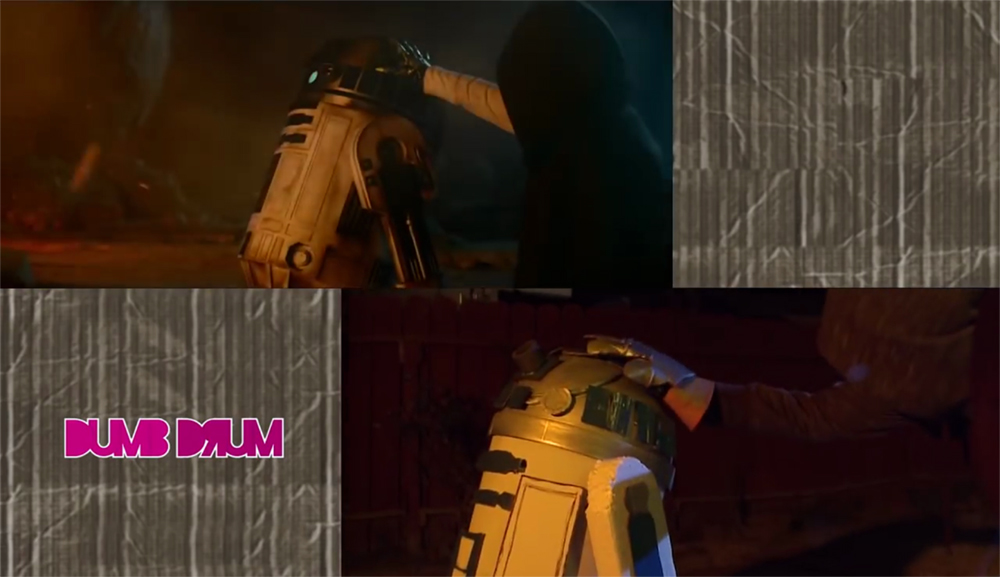
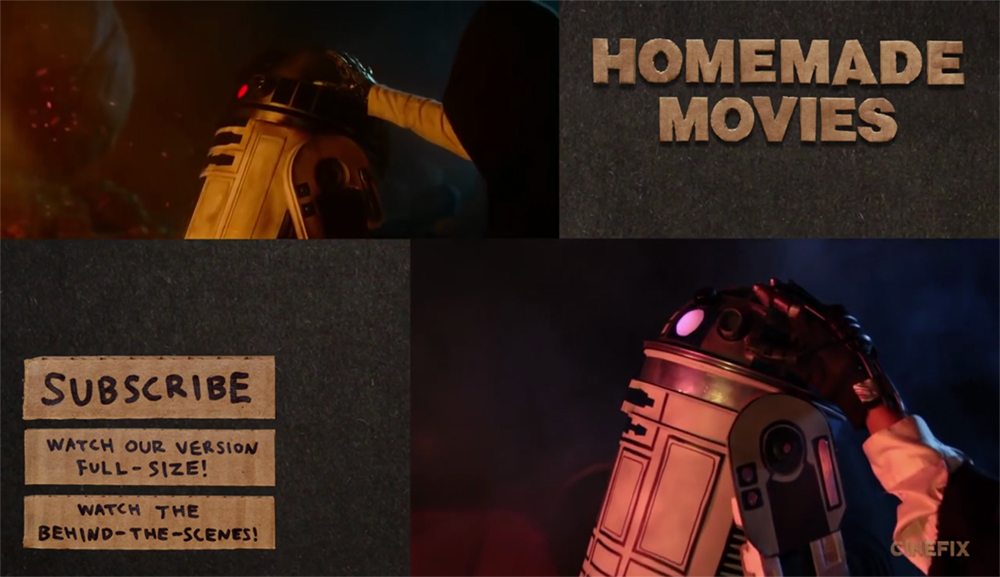
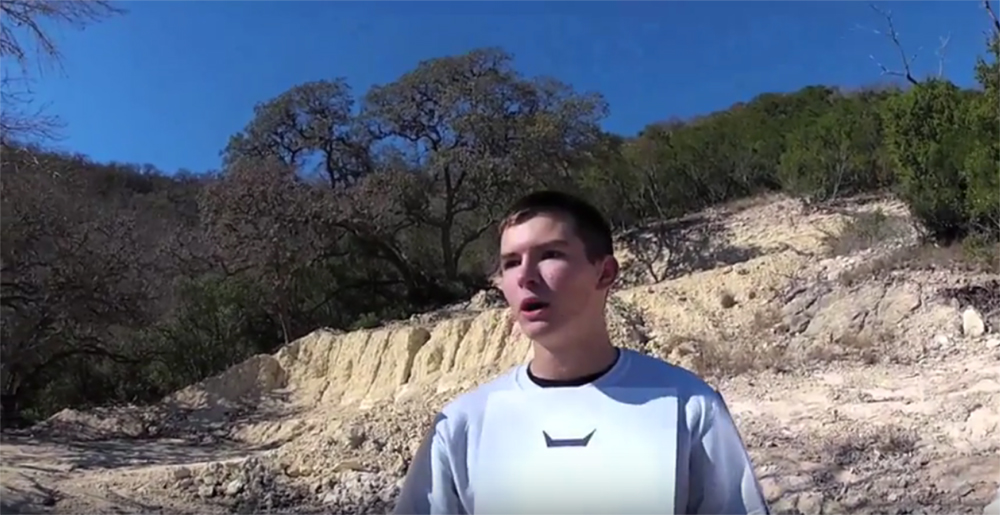

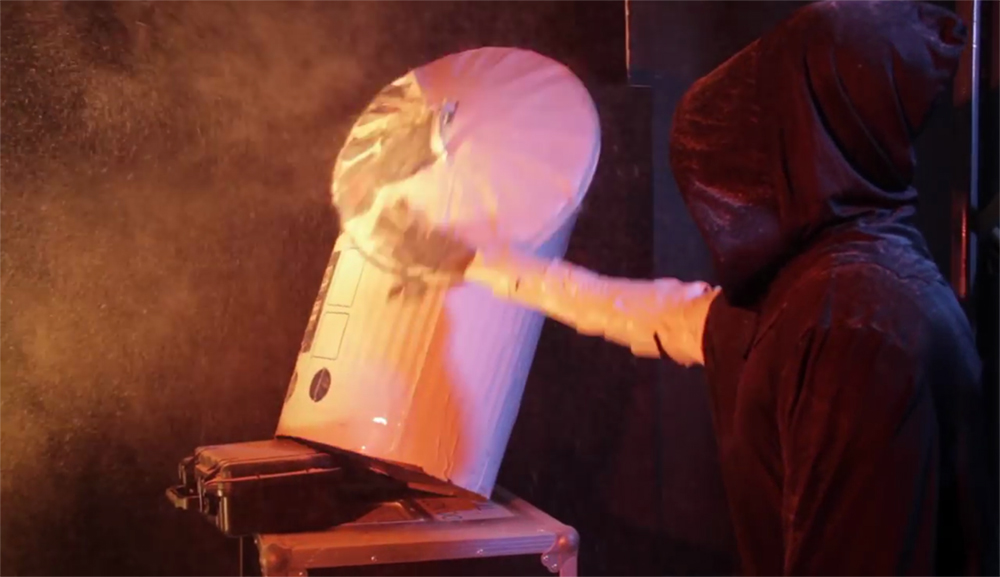
Trailers:
Over the past decade, trailer production and circulation has increased exponentially.8 Trailers are an important commodity of replay culture as they are widely distributed, free to own, and easy to capture and manipulate with rudimentary desktop editing suites and video players. Trailer releases themselves have become media events of anticipation, with brief teasers—approximately ten-to-fifteen second excerpts, commonly referred to as “trailers for trailers”—published days in advance of a trailer release. Fandom-centered events, such as ComicCon, also capitalize on this anticipation by promoting trailer world-premiers. The number of views that a trailer receives online is now considered a form of cultural cache and is reported on such distinguished entertainment news sites as The Hollywood Reporter. Popular entertainment news sites also use trailers and their releases to generate a great deal of content, including critical assessments, speculation narratives, and the general soft promotion of popular properties that ensures reader retention. Sweded trailer producers exploit these same anticipatory promotional cycles in order to boost their own profiles while also ensuring the increased exposure of particular media franchises. In this sense, trailer sweders implicate themselves within the replay culture of trailer circulation and continuity, imbuing the trailer release itself with an aura of media-historical significance.
Scholars such as Lisa Kernan and Keith Johnston approach trailers as unique short films within the contexts of larger paratextual flows (Johnston 2; Kernan 1). As Kernan states, trailers are particularly important film objects because “promotion and visual narrative have become increasingly difficult to disentangle in all kinds of popular media” (1). The rhetoric of trailers lies in the space between attractive promotional images and a coherent cinematic narrative, and results in what Kernan terms “trailer logic” (10-11). Within this logic, trailer producers creatively utilize “falsifications,” the truth claims of which create ranges of audience response. These falsifications result from what Kernan calls “discontinuity editing…, [which] operates through alternation, combination and abbreviation of scenes to construct a new, trailer logic, differing from (yet, obviously, related to) the narrative logic of the film” (10). Trailer producers have approximately 90-seconds to summarize a film’s appeal, typically through formulaic genre queues. Narrative distortion—manipulating juxtapositions of character reactions, plot points, and dialogue—and the emphasis of generic elements in order to reach diverse consumer publics are just two forms of the possible falsifications involved in trailer logic. Falsifications may also occur due to the presence of shots or scenes that do not survive a film’s final cut. Recent examples of these falsifications at play include an audience member’s attempt to sue the distributor of Nicholas Winding Refn’s 2011 Drive for its misleading advertisement that articulated the film as a Fast and Furious-style actioner,9 and another threat to prosecute Warner Bros. for their 2016, DC Comics adaptation, Suicide Squad, the trailers for which misled audiences by proffering a Joker-heavy narrative that was largely absent from the final film.10 Though trailers are not intended to deceive consumers, they do exploit textual multiplicity and manipulate consumers’ anticipation.
Gray utilizes Kernan’s basic configuration of trailers in order to express a paratext’s relationship with textuality: 1. Establishes a film’s genre; 2. Celebrates and features its stars; 3. Provides an environmental sampling (50). The generic structures of film trailers, such as those of the action film, “eschew complexity in favor of multiple fighting scenes, car chases, elaborate stunts, and awe-inspiring pyrotechnics, all accompanied by fast-paced, energetic music” (51). But if, as Gray states, producers and distributors use paratexts to articulate their proper and preferred interpretations (72), then how can textual distortion be accounted for within the broad strokes of trailer logic? Moreover, how do the generic formal conventions of trailer production affect textual specificity, especially when considering that multiple trailers invite variable interpretations?
In example, it is difficult to release a trailer for The Force Awakens without already knowing much of what the film will offer as a sequel to the largest franchise in film history. The Force Awakens’ final trailer, for instance, certainly offers a Star Wars experience, as it is filled with Star Wars imagery, tone, action, and most importantly, a reliance on previous knowledge of the property.11 The trailer is rich with intertextual reference to the extent that any plot point is heavily dependent on the context of those references. This is partly attributable to the phenomenon of soft-reboots,12 which combine the production strategies of remaking and rebooting a franchise. Continuity is maintained but efforts are made to reinvigorate a franchise in order to cultivate a newer audience. Recent examples include Jurassic World, Terminator Genesys, and The Force Awakens (all 2015). All three films were meant to bolster interest in their respective franchises—to reboot—but they also remade or rearticulated elements from their earlier installments, including plot points, action beats, set pieces, special effects, and characterizations. The Force Awakens is a particularly interesting case of the soft-reboot as it was intended to reboot and distance the franchise from the largely critically-maligned Star Wars prequels and remake the aesthetics and tone of the original trilogy.13 To clarify, there is no clear plot discussed within the trailer, but the trailer’s intertextuality explicitly references plots from previous films: Kylo Ren (Adam Driver) will “finish what you [Darth Vader] started;” Han Solo (Harrison Ford) admits “It’s true. All of it. The Dark Side. The Jedi.” Applied to Gray’s approach, textuality needs to be considered in a very broad sense, and not limited to the paratextual flows of an individual text. How might this expanded textuality of trailer logic be accounted for within such franchises, and how might sweding function in relation to the narrative textuality of trailer logic?
Sweding as Remake:
There is a long history of fan cultures recording, remixing, and remaking films of their favorite popular-culture properties. Henry Jenkins cites such practices as far back as 1975 in which Star Trek “vidders” remixed television episodes (117). Though such examples are remixes, and not remakes like sweding, the intentions remain: the projects are expressions of fans’ love and investment. A more astute example of an early form of sweding is the fan-made film Raiders of the Lost Ark: The Adaptation, a precursor that Gondry himself has acknowledged. Filmed by two youths from Mississippi, Chris Strompolos and Eric Zala, this adaptation was produced over an eight-year period (1982-1990), and was further worked on—post-production and reshoots—for the next 15 years (Windolf 7). Raiders: The Adaptation’s lack of explicit reflexivity, however, differentiates it from contemporary sweding. For instance, Zala and Strompolos went to exceptional lengths to recreate the booby-trap sequence from the film’s iconic opening in which Indiana Jones evades a giant, rolling boulder (see Figure 8). Not only did the filmmakers construct a set including what appear to be mud walls and realistic cobwebs, but they also built a three-dimensional, textured and painted boulder that maintains a striking resemblance to the object in Spielberg’s film: gravity convincingly guides its movement (see Figure 9). On the other hand, Dumb Drum’s swede of the same sequence features a two-dimensional boulder fashioned out of a series of ill-fitted, unpainted cardboard boxes, and is adorned by only a smattering of drawn-on contouring. Furthermore, the boulder is navigated by a production participant whose feet are clearly seen under the moving object (see Figure 10). Where sweding utilizes a distinctively impoverished aesthetic, Raiders: The Adaptation tries to veil its low-production value, and aims instead for a sense of mimetic realism.14
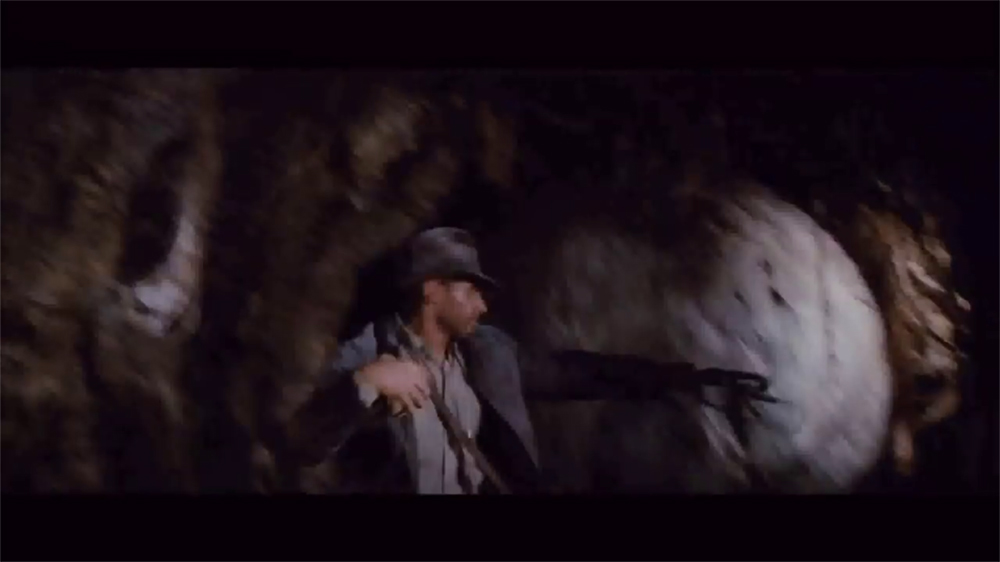
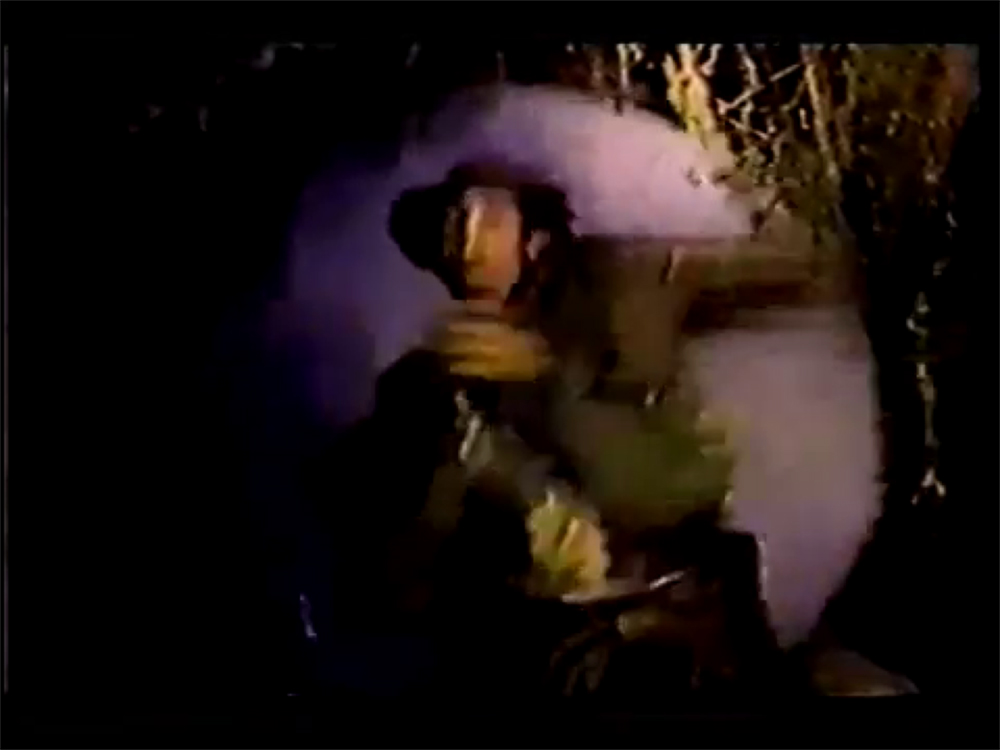

Effectively, sweding is a manifest form of what Thomas Elsaesser refers to as Cinephilia take-two. Cinephilia, understood generally, is a “love of cinema: ‘a way of watching films, speaking about them and then diffusing this discourse” (28). Historically, cinephilia is understood as a product of film experience and writing, traditionally aligned with cine-clubs in post-war France and the journal Cahiers du Cinéma. This form of cinephilia, which Elsaesser refers to as “take-one,” is embroiled in a temporality of “trepidation in anticipation,” in which film screenings were limited by their exhibition schedules and, consequently, moments of film enjoyment/consumption—also known as cinephilic moments—were fleeting and ephemeral (39). Cinephilia “take-two,” on the other hand, has to “live in a non-linear, non-directional ‘too much/all at once’ state of permanent tension, not so much about missing the unique moment, but … namely about how to cope with a flow that knows no privileged points of capture at all and yet seeks that special sense of self-presence that love promises and sometimes provides” (Ibid). Furthermore, take-two manifests in a variety of different ways, and is often expressed in digital media in both writing and moving-image creations. Jason Sperb expounds on the temporal-based anticipatory anxiety of cinephilia take-two by contextualizing it within the concept of jamais vu, the “feeling of having experienced something for the first time, despite having actually experienced it before” (149). Within this framework, sweders rearticulate the temporality of seeing these films for the first time by implicating themselves within reconstructions that are then shared with others: they experience and express their love of these moments. But why do trailer sweders choose to remake the industry-constructed and curated film moments of trailer logic instead of moments of their own choosing?
In his article “Twice-Told Tales,” Thomas Leitch categorizes many contemporary modes of adaptation. Two of these are the “update” and the “homage”:
Updates are characterized by their overtly revisionary stance toward an original text they treat as classic, even though they transform it in some obvious way, usually by transposing it to a new setting, inverting its system of values, or adopting standards of realism that implicitly criticize the original as dated, outmoded, or irrelevant. … An homage is a remake … whose primary purpose is to pay tribute to an earlier film rather than usurp its place of honor, [and they] present themselves as valorizations of earlier films which are in danger of being ignored or forgotten. (47)
Raiders: The Adaptation’s quality of realism establishes an homage approach that compliments the original. Sweded films on the other hand exist in an unclear space between an homage and update: they copy the original while maintaining distinct stylistic differences. DD and HM both went to great lengths to remake the framing, action, acting, and effects in their respective The Force Awakens trailer swedes, as one would in an homage. Like all sweding, both of these productions contain the basic components of the arts and crafts aesthetic, coupled with human-voice-reproduced sound design. The quality and types of objects utilized in these semi-professional, mimetic trailer swede productions might signal sweding’s possible critical ingress, marking them as a sort of update remake. And yet, the mimetic accuracy of the crafts-supply aesthetic, tethered with the lack of explicit textual subversion, speaks more to budgetary concerns and availability than to critical reevaluation (see Figures 11 & 12).

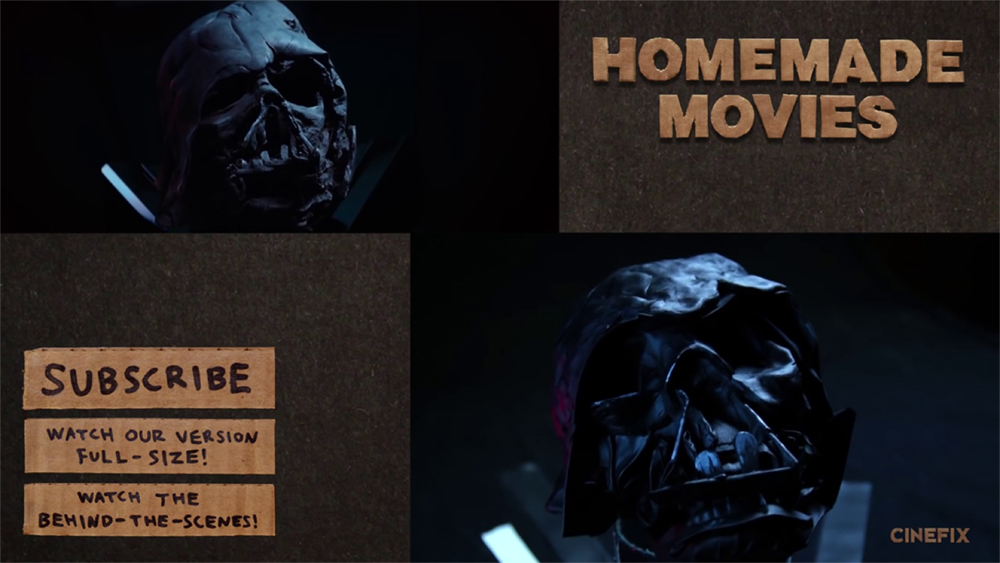
These examples are clearly motivated by a reserved level of textual rupture. Unlike earlier trailer swedes produced by DD and others—those that explicitly break the fourth wall for parodic purposes, such as the feet that appear under DD’s reproduction of the Raiders boulder—these swedes for The Force Awakens aim to veil all but the most difficult to reproduce shots. In both DD and HM’s The Force Awakens trailers, the only truly explicit revealings of the means of production occur during the reproduction of spaceships in flight, wherein the ships are affixed to rods or poles in order to generate movement. Elements such as mugging for the camera, inciting an ironic tone while delivering dialogue, and explicit textual ruptures—such as the appearance of hands moving miniature objects—have disappeared. Hartwig states of trailer remixes, “Following Linda Hutcheon’s definition of parody as “repetition with a difference,” … trailer parodies feed off the intertextual relations of the original source material and its repetition by recombining familiar elements with a critical and ironic distance” (216). Yet, unlike trailer remixes, the recombinational element of these semi-professional, mimetic sweded trailers—replacing all elements of the mise-en-scene with a distancing materiality—is minimized due to the impetus to reproduce moments as accurately as possible. Of course, the modes of production—the surface-level reflexivity—remain highly visible, but their visibility within this aesthetic functions instead as a medium through which the filmmakers can display their ingenuity and talent without critical or ironic distance.
Sweded Trailers as Adaptation:
Sweded trailers are ideal objects of examination for contemporary adaptation studies. They are representative of the sociological expansion of the field, as called for by Simone Murray, because they necessarily involve the various cultural dimensions of a text’s flow through digital media platforms, accounting for the production process, the text itself, and its audiences (Murray 12). Contemporary collaborators are well aware of the complexities involved in textual authorship as it circulates throughout transmedia processes. Sweders most often engage properties based on popular novels and comic books that are part of larger franchises or universes, and/or they feature characteristics of popular-genre franchises that have lived extended cycles of circulation because of their pop-culture status. The intellectual property of Star Wars—now owned by Disney—is not simply transformed by one studio into new film installments within the self-contained narrative arcs of trilogies, sequels, and prequels. The flow of these textual iterations is also shopped out to trailer houses that produce promotions, which expand, complicate, and intrigue. Their primary goal is the creation of advertisements, yet trailer houses nonetheless construct unique short films—in Kernan and Johnston’s sense—with speculative narratives based on excerpts of material provided by the studios. Though “trailer houses do not actually steer or strategize promotional campaigns or manage how trailers are used and circulated” (Grainge and Johnson 151), they nonetheless have great influence over the ways in which these texts transform. And studios often use these trailers as aesthetic and tonal guidelines for their overall marketing campaigns (153).
Once again, Suicide Squad’s trailers prove a good example of this influence. As reported in THR, WB decided to cut an alternate version of Suicide Squad to that of the director’s, David Ayer, in order to “deliver on the fun, edgy tone promised in the strong teaser trailer for the film” (Masters). The article continues, “The studio-favored version with more characters introduced early in the film and jazzed-up graphics won,” and these elements eventually made it into the film. Moreover, it was Trailer Park, the trailer house that produced said trailer for Suicide Squad that assisted with the alternate cut’s editing. This is not to say that Trailer Park’s work on the Suicide Squad trailer was intended to engage with broader intertextualities of DC’s properties from other media forms such as comics, cartoons, videogames, etc. However, their interpretation may very well have been rich with the sorts of intertextual moments that fans would otherwise interpret and focus on as collaborators.15 Not only are these short films subject to the generic stylistics and tropes that apply to cycles of trailer production, but they also elicit the generic stylistics and tropes of the larger properties on which they are based and which have proven key to the audiences’ pleasure.
As Hartwig states of trailers, “they are cognitively open, leaving the viewer with unanswered questions and cognitive gaps in order to motivate a cinema visit” (226). However, in the case of transmedia franchises, a trailer’s cognitive gaps are not limited to the individual narratives of the films they sell, but also function as windows unto the broader properties in which they are set. As discussed above, The Force Awakens’ trailer logic is explicitly—though not exclusively—aimed at a Star Wars-literate viewer. These published trailers are “dissected and analyzed by the networked communities” (Ibid), but it is these cognitive gaps that are the focus of anticipatory and speculative fan analyses, such as trailer readings, rumor, and theory vids, all of which function as their own forms of content and “consumable goods” on sites like YouTube (224). Yet, unlike other forms of DIY fan-made content that engage in the transmedia circulations of larger film properties—such as remixes and mashups—trailer sweding’s aesthetic peculiarity and rigorous mimetic cohesion displays an unwillingness to expand, distort, or speculate on the narrative dimensions of their source texts. The content of the trailer is remade without filling in any cognitive gaps. How then are these creations collaborative in any sense other than as complicit extensions of entryway paratexts?
Daniel Hesford takes up Klinger’s discussion of the “performance” of trailers and the notion of “digressive receptive potential,” stating “the very act of ‘experiencing cinema’ is coded into a trailer’s performance—taking place in the ‘undefined’ paratextual space between text and reader, product and consumer” (3). Hesford primarily discusses the phenomenon of trailers without films, such as the spoof-trailer Machete that was produced for Quentin Tarantino and Robert Rodriguez’s Grindhouse (2007). Although Machete was eventually developed as a feature, followed by a sequel, fans of the grindhouse genre brought with them particular sets of expectations and literacies in order to enjoy and understand the filmless trailer. These expectations can also be subverted by fan vids that “challenge a text’s industry-preferred meanings by posing their own alternate readings and interpretive strategies” (Gray 145). Robert Ryang’s much-cited Shining (2005), for instance, engages digressive receptive potential by removing the horror genre trailer logic of Stanley Kubrick’s The Shining (1980) and replacing it with the logic of a family drama.16 However, Shining’s digressive generic conventions are dependent on a familiarity with the text’s narrative, and subversion only occurs through the articulation of textual disparity. As Hartwig notes, “anyone unfamiliar with The Shining will fail to enjoy the generic twist of ‘Shining’” (217). Ryang’s subversion of trailer logic, and inevitable exposure of trailer production methodologies, remains dependent on a knowledge of the original film’s narrative. And yet, semi-professional, mimetic trailer swedes neither subvert the narrative of the subsequent film, nor do they expand on a digressive receptive potential that the official trailer does not already provide: both trailer and swede are open-ended and invite the same sorts of anticipatory, transmedia consumption. Instead, it is within the dimensions of paratextual release strategies and industrial management that subversion occurs.
Gondry’s film features a type of sweding that is underpinned by a critical dichotomy of individuality and corporatization, in terms of filmmaking (DIY vs. Hollywood), film consumption and distribution (independent rental store vs. Blockbuster), and community (close-knit, historical population vs. gentrification). And this criticism metaphorically manifests in the aesthetic of sweding, a practice that brings together an independent small community of filmmakers that share in something outside of the principles of industrial commoditization. Be Kind Rewind’s sweding is also rich with digressive receptive potential and filled with excessive ruptures that distance these remakes from their source films. In short, Be Kind Rewind’s sweding features update remakes: they represent how the participants idiosyncratically experience, remember, and desire the films that they love.
And yet, the semi-professional, mimetic trailer swedes examined herein are a different phenomenon. The sincere engagement and focus on exceptional mimetic reproduction renders the aesthetic critically neutral. However, by decontextualizing what is, in essence, an ad for a movie these sweders provide one more transmedia iteration for fans to enjoy, which circulates at no cost to viewers, and sincerely shares in the love of the open-ended, cognitive gap-filled style of textual consumption that is tremendously prevalent to contemporary trailer culture and fandoms. In his analysis of spoof trailers, Hesford refers to this process as “digressive paratextuality,” in which “coming soon [is] illusory—the trailer is the moment” (3). Trailer swedes consequently engage, and perhaps inadvertently support and extend, the promotional cycles of the trailers they adapt. But they also feature a digressive paratextuality that exploits and subverts the promotional purposes of the Hollywood industry’s entryway paratext release strategies. A closer examination of DD and HM reveals these strategies at play.
Dumb Drum
In November 2015, Dumb Drum received a great deal of attention for their The Force Awakens trailer swede.17 The filmmakers were flown to New York for an interview during Good Morning America’s Star Wars Week, and were also featured soon after on Entertainment Tonight and Inside Edition. Prior to this event, their Avengers (2012) trailer swede garnered the most online attention for this collective (San Joaquin Spotlight). It also marks the beginnings of an interesting shift in DD’s approach to adaptation, a departure from explicit parodic elements and tone. This particular swede features seven explicit reflexive moments that directly critique, or make light of, the film on which it is based, such as a line of dialogue “This is basically Iron Man 3, right?”.18 Herein, explicit reflexivity signals moments that feature commentary or over-emphasized elements, such as saying the word “explosion” instead of mimicking the sound of an explosion. These digressive moments rupture trailer logic for the purpose of ironically distancing the viewer as in Hutcheon’s discussion of parody, repetition with a difference. Two successive DD swedes also feature such explicit moments, but they are diminished: DD’s Avengers trailer #2 features three moments, and their The Dark Knight Rises (2012) swede features two moments. By the time DD produces a swede of Pacific Rim (2013) these explicit ruptures have abated. Their The Force Awakens swede is the perfect example of this type of adaptation, wherein the sweded format functions simply as a style through which to reproduce the original text as accurately as possible.
The Force Awakens’ final trailer opens with the film’s protagonist, Rey (Daisy Ridley), exploring the interior of a giant metallic structure. Moving from one platform to another within the setting, Rey slides vertically down a rope. In order to reproduce the scope of the structure and the two long shots involved in Rey’s movements—the third and fourth shot—DD’s adaptation utilizes a small action figure. Instead of sliding down the rope, as Rey does in the trailer, the rope in DD’s adaption is moved downward with the action figure fastened to one position. The rope is clearly moving, a result of working with the materials and possibilities at hand. Yet there is an incredible attention to detail between the third and fourth shots of the swede that could have otherwise been disregarded: the rope is affixed to the figure in two different configurations in order to reproduce the rope’s movements as it flows with Rey’s momentum (see Figures 13 & 14). In this sequence, the extreme mimesis of the reproduction outshines the disparities of the swedes material limitations. Later in the trailer, a Tie Fighter of the Imperial Fleet spins out of control as it moves into the desert planet Jakku’s gravitational pull. In DDs reproduction, cardboard is used to recreate the rounded shape of the desert planet as seen from space. Once again, this shot features a minor technical limitation that is minimized by DDs attention to detail. The crew reproduced the spiraling effect by attaching the ship to a fishing line, spinning it, and filming vertically as the ship was lowered. The shot was then flipped 180-degrees counterclockwise in editing. The fishing line remains visible as a result of the shot’s lighting. However, fastened along the horizon of the planet is a strip of blue material that replicates the planet’s atmosphere (see Figure 15). Though easily unnoticed, this minor detail displays the lengths to which DD commits their reproductions. Ultimately, the identification of DDs material means and strategies of reproduction becomes an exercise in admiration for their ingenuity, instead of a distancing digression. Unlike remixes or parodies, including other forms of sweding, these semi-professional, mimetic trailer sweders pull viewers into the mimesis of these textual reproductions instead of pushing the viewers away to a critical distance.
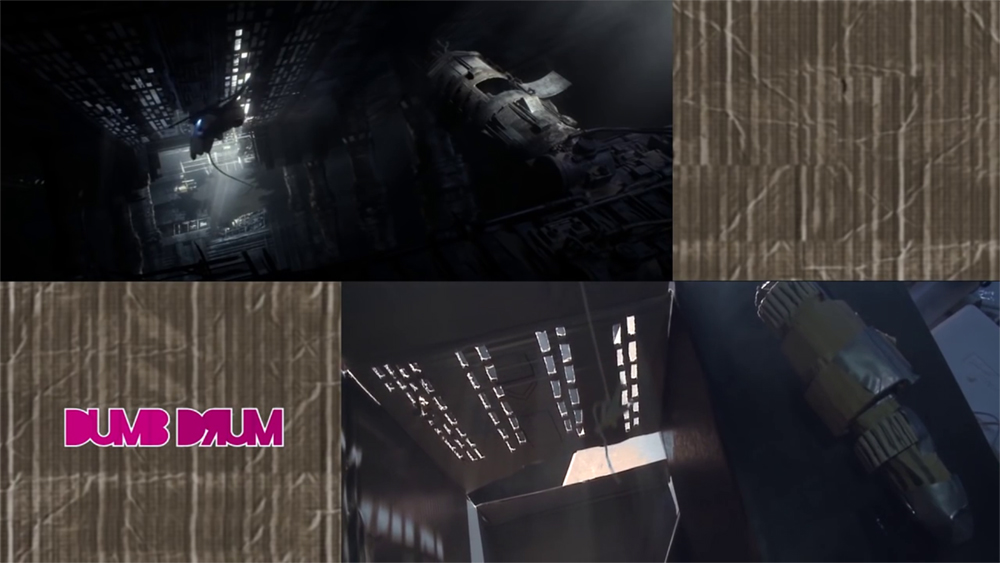
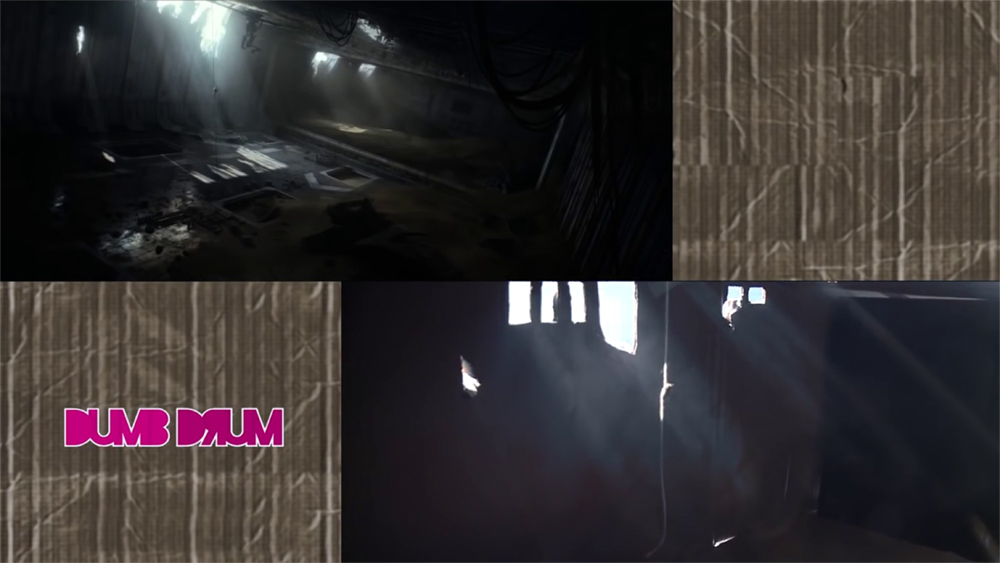
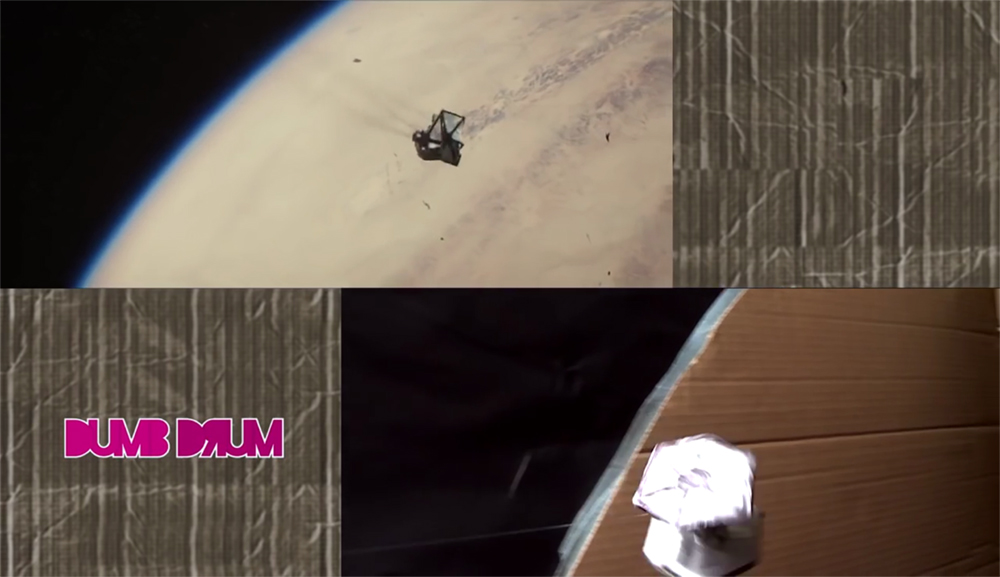
When discussing these productions, whether on their YouTube channel or in interviews, Rodriguez and Harley elicit the act of having fun, and their language is rich with articulations of humor, yet they emphasize that the humor is not intended to undermine these films or properties. In an interview with San Joaquin Spotlight, Harley states, “It’s not … This isn’t really necessarily a parody. Maybe it’s a form of parody, but it’s very specific, y’know; you’re making kind of, the movie, but from the perspective of a fan. You’re not making fun of it; you’re just embracing how much you love this movie” (San Jose Spotlight). Yet, this statement is peculiar when considering that the swedes they produce are released before the feature films on which they are based. Their love may be an expression of investment in the particular transmedia properties at large, but it also appears to be a love of the trailers themselves as unique short films. This is nowhere more clearly exhibited than in their very own production paratexts, and particularly within comparison videos. Also known as side-by-side comparisons, the primary purpose of comparison vids is to illustrate these sweders’ remarkable skills. Though these videos permit a more substantial sense of the materiality of sweded trailers—viewers can determine which materials represent objects within the official trailer—they also function to draw attention to the mimetic precision of shot composition, movement, and editing skills.
CineFix – Homemade Movies.
HM avoids the use of the term “sweding,” but they nonetheless focus on the same intensity of reproduction as DD: “Homemade Movies serves up creative remakes of your favorite movies, trailers and scenes! Every episode is an exact shot-for-shot remake created at home without any visual effects,” (“CineFix: Homemade Movies”). In fact, McLean states, “The attention to detail is something … I think sets our recreations apart from the usual ‘sweded’ style you see online. We analyze every shot to see what the important details are, what are the most prominent elements and shapes, and so on” (Eames). Though HM’s style of sweding is far more polished than many sweded films found online—as part of CineFix, they have both the infrastructure and funding to produce higher quality sweding—DD and HM’s productions both feature an equally compelling attention to detail.
The Force Awakens’ second official teaser trailer opens with a long shot of Rey’s “speeder.” The land-based ship moves through the desert, across the frame, and past a marooned Imperial Star Destroyer. As the camera tracks with the movement, the speeder kicks up a trail of dust. Cleverly, HM reproduced both the movement of the vehicle and the dust by attaching a small toy vehicle—what appears to be Lego—to a pole that captures the color quality of the dust billows (see Figure 16). As the vehicle and pole move, they reproduce the dust stream. HM’s attention to elements and shapes also extends to the quality of lighting, use of shadow, and to an exceptional reproduction of camera movement. In comparison to DD’s swede, which also features a fantastic job of color matching, HM’s swede achieves a greater detail of verisimilitude with The Force Awakens trailer’s color scheme because it embraces shadows (see Figure 17). In DD’s swede, much of the colors are very similar to the trailer, but all of the shots are much more heavily lighted than HM’s (see Figure 18). This is perhaps not an oversight on DD’s part, but an intentional strategy that allows greater visibility of the materials onscreen. HM’s use of shadow, however, allows the color schemes to better match those presented in the trailer.
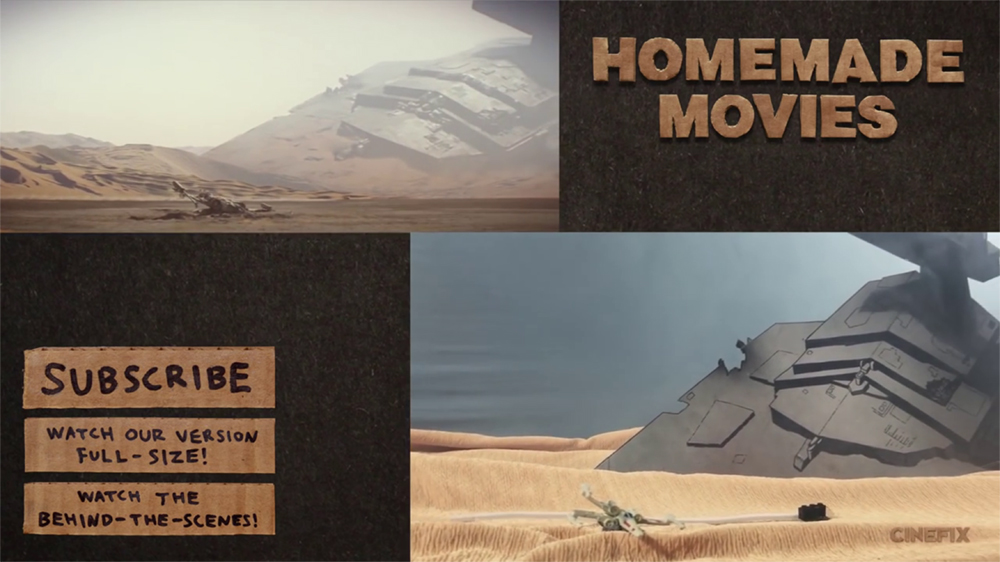
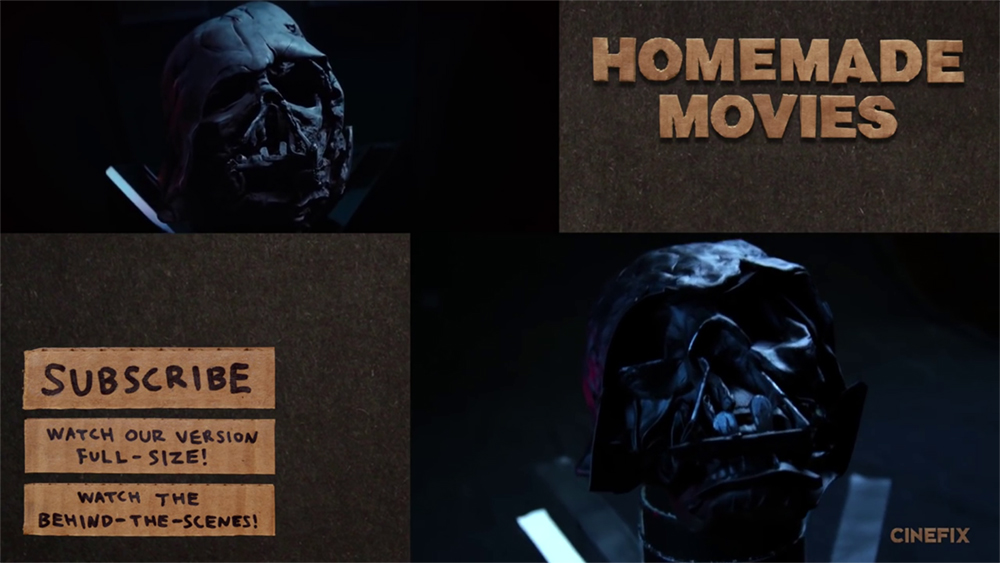
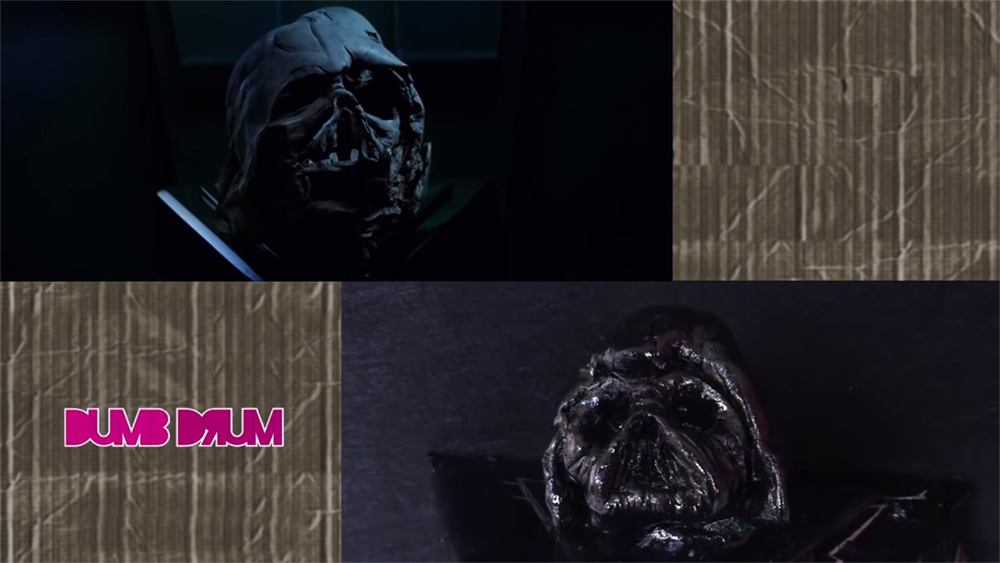
The other distinction between these two collectives’ approaches is HM’s camera movement precision. Both DD and HM reproduce all the major camera movements involved in their respective projects, such as pans, tracking shots, and zooms. However, HM goes even further by mimicking all the subtle and minor camera movements that result from the handheld camera aesthetic of The Force Awakens. This is not to say that DD does not also reproduce the handheld aesthetic, but there are a number of shots in DD’s swede—mainly shots of miniature spaceships in movement—that, for whatever reason, remain static.19 HM’s efforts to reproduce handheld movements, however, are undeniably more refined. Once again, the passionate attention to minute details overshadows the distancing reflexivity of the form’s aesthetic in order to foreground these sweders’ mimetic talent.
Sweding Hollywood:
DD and HM’s exceptional mimetic precision circumvents the sorts of excessively reflexive critical ingresses produced by other forms of fanmade adaptations. Nonetheless, both parties establish substantial digressive receptive potential through the management of their DIY paratexts. Releasing these sweded trailers during the same cycles as those of official entryway paratexts increases the chances of integration within promotional campaigns, both unofficially as circulated by fandoms that collaborate in the exchange of such texts, and officially as in the case of DD’s exposure on Good Morning America, a show that is broadcast on the Disney-owned network-television station ABC. The majority of DD and HM’s sweded trailer content is now released within the same temporal cycles as the texts on which they are based, which exploits Hollywood’s promotional campaigns and feeds back into their own self-promotion as amateur/independent filmmakers. Thus, the digressive paratextuality of these sweded trailers is illustrated by the appropriation of extratextual, industry-managed promotional strategies.20
These texts undeniably benefit the Hollywood industry by functioning as peripheral and paratextual forms of unofficial promotion, which encourages further fan investments.21
But by appropriating official promotional cycles, these sweders bolster their own creative output. Essentially, the exploitation of these paratexts—the decontextualization from official cycles and adaptation within collaborative fandoms—benefits the participants’ employment opportunities and industry profiles, such as: the revenue generated from the advertising that accompanies their YouTube channels; the work itself functions as an expanded job resume with built-in performance evaluation (online views and commentary); and working with a variety of teams, and guests in the case of HM, offers networking possibilities. And this digressive paratextuality also extends to the Hollywood industry-styled paratexts that the collectives produce. Both DD and HM record behind-the-scenes videos, and HM further creates how-to videos, drawing distinct connection to the “trivia” and “insider knowledge” texts of Hollywood (Beyond the Multiplex 54). Overall, these trailer sweders subvert Hollywood’s promotional strategies of trailer production by undermining the industry’s commercial intentions and redirecting the promotional potential of these texts for alternative purposes.
Regardless of official commercial purposes or these DIY filmmakers’ professional interests, trailer sweding decontextualizes highly coveted objects of fan culture desire from the controls of the Hollywood industry’s monetarily-driven exhibition and distribution strategies. Entryway paratexts are a form of free content in and of themselves, but they are utilized in order to incite consumer investment in the form of future goods and services exchange. Trailer sweders, on the other hand, appropriate a free form of content with the primary purpose of producing another free form of content. Both DD and HM articulate themselves as DIY collectives, and do indeed have an independent sense of creativity and production that encourages other amateur and independent filmmakers. DD is community-driven with community-minded sponsors. HM makes their films on “very tiny” budgets (Eames), with friends, their ingenuity is described in contradistinctive terms from the Hollywood industry, and they post how-to videos to bolster the sweding community.
Ultimately, sweded trailers turn the digressive reception potential of trailers into a vernacular archival function of shared anticipation. Through mimetic impetus, these filmmakers play with cinephilia’s anticipatory anxiety and illustrate fan cultures’ desire for, and consumption of, trailers as unique texts within the intertextual experience of broader franchise properties: a process similar to Hollywood’s own recycling and exploitation of intertextuality, the soft-reboot. The sweded trailer is an object of contemporary transmedia flows that underscores how the “dissociation [of content] from any one media platform and its simultaneous replication across a range of mediums via digitization” opens up new practices of adaptation within the ”multipurposing” commercial environment (Murray 10). Sweding’s decontextualization of a promotional text from its official commercial process demonstrates the willingness of contemporary fan cultures to rethink and reassess their relationship with, and conceptions of, film. Furthermore, the transformative adaptation of sweded trailers illustrates the critical capabilities of these fan cultures. Their appropriation of the temporal management strategies of industry-sanctioned promotions exploits the commercial nature of franchise commoditization while reasserting the importance of these fan cultures—and their digressive paratexts—to the flow of transmedia properties.
Endnotes
1 The sweders in Be Kind Rewind use a VHS recorder, and screen the films in a local video store. Soon after the film’s release, Gondry engaged in multiple art installations that maintained a community-based ideology by using analog devices, in-camera editing, and local exhibition. Gondry’s discusses his ideal vision of the form in detail in his book You’ll like this Film because you’re in it: the Be Kind Rewind Protocol, in which he states, “I don’t think the film coming out of this should end up on the Web. It should remain on a physical device, whether tape or DVD. Don’t let any corporation sponsor your effort if you are following the protocol” (75). Contrary to Gondry’s wishes, the form’s popularity transcended his original conceptions and became its own online phenomenon.
2 See: https://www.youtube.com/watch?v=-B0dJQ35rDs.
3 A brief note of clarity... There are two primary forms of sweded films: those that recreate certain scenes, chosen idiosyncratically by the participants; and those that are considered sweded trailers. The former is the type of sweding that occurs within Gondry’s feature. The latter type takes inspiration from Gondry’s own promotion for Be Kind Rewind. However, in the early years of their ascendancy—prior to 2014—the reproduced scenes and shots within sweded trailers were also often based on the random choices of participants, and were rarely informed by a film’s official promotional texts. The very few examples available on YouTube that do engage official promotional texts also distort those texts significantly for the purposes of lampooning the feature on which they are based. Such distortions include additions to dialogue and general excessive moments of fourth-wall-breaking buffoonery.
4 Other sweded film festivals have occurred in New Hampshire and Scotland.
5 For a detailed discussion of below-the-line/above-the-line worker dynamics, see Caldwell.
6 See: https://www.youtube.com/watch?v=qaqwMMek_VY and https://www.youtube.com/watch?v=Yr9QFlsegwM.
7 See: https://www.youtube.com/watch?v=wG3awJsmAmw.
8 For a detailed overview of the past decade’s trailer production boom, see Paul Grainge and Catherine Johnson’s (eds) “Trailers and the Infrastructure of Blockbuster Marketing,” in Promotional Screen Industries (Routledge, 2015), 148-177.
9 See: https://www.theguardian.com/film/2011/oct/10/woman-sues-drive-trailer
11 See: https://www.youtube.com/watch?v=sGbxmsDFVnE
12 The term “soft reboot” originates from film industry jargon coupled with film journalism/criticism. Identified by the film industry as savvy, and by journalism/criticism as creatively bankrupt, it is a form of reboot that maximizes appeal by building new audiences while retaining residual audiences from previous franchise investment. For a more detailed breakdown, see: http://www.denofgeek.com/us/movies/soft-reboots/247403/the-highs-and-lows-of-the-soft-movie-reboot and https://www.inverse.com/article/9633-thanks-to-the-force-awakens-and-jurassic-world-2015-is-the-year-of-the-soft-reboot
13 This is apparent in the film’s trailers which feature a marooned Star Destroyer that has crash landed on a desert planet, harkening back to both the desert planet Tatooine featured in A New Hope (1977) and a spaceship design that only appeared in the original trilogy.
14 The above stills are distorted because of action in motion. For a better sense of the adaptations’ designs, see: https://www.youtube.com/watch?v=upqiq6MUAh0 for Raiders: The Adaptation; and https://www.youtube.com/watch?v=LlaKcg-365k for Dumb Drum’s version of the same scene.
15 This exact type of collaborative interpretation did in fact circulate around the promotions of Suicide Squad, in union with those of Batman v Superman. The two trailers inspired speculative narratives covered by many entertainment sites and blogs, and focused on the mythos of Jason Todd—the second character to take on the mantle of Batman’s ward, Robin—whom was killed at the hands of the Joker. Though ultimately incorrect—save any unforeseen retcons in the DC film universe—this interpretation was executed by connecting a popular narrative from a 1980s run of Batman comics, a plot adaptation of 2000s Batman Beyond: Return of the Joker animated feature, as well as the immensely popular 2015 videogame Batman: Arkham Knight,and was supported by Suicide Squad promotional stills. For the most comprehensive overview of this theory, see: https://www.youtube.com/watch?v=Lk5nqqWK6_I
16 See: https://www.youtube.com/watch?v=sfout_rgPSA
17 See: https://www.youtube.com/watch?v=4fDlPI1vI2A
18 See: https://www.youtube.com/watch?v=2aLgdMz0p5Y
19 See: https://youtu.be/U4mb7HtEiE4?t=1m40s and https://youtu.be/6TR6Gvw3dpc
20 With the exception of two examples, all of HM’s sweded trailers that were released within a feature’s correlate film-promotion cycle garnered far more views on average than those released after the feature. On average, DD receives anywhere from half-a-million to 1.5 million views for their sweded trailers, and in one case, their Avengers: Age of Ultron (2015) rendition, over 3.3 million views. The Force Awakens sweded trailers for both outlets received over 1 million views.
21 Both DD and HM have been solicited by Hollywood to create tie-in promotions, but they are both transparent about these agreements and inform their site visitors of these occurrences.
Works Cited
Avery, Dwayne. Unhomely Cinema: Home and Place in Global Cinema. Anthem Press, 2014.
Caldwell, John Thornton. Production Culture: industrial reflexivity and critical practice in film and television. Duke University Press, 2008.
“CineFix: Description.” YouTube, June 24, 2006, www.youtube.com/user/CineFix/about
“CineFix: Homemade Movies.” YouTube, www.youtube.com/playlist?list=PL1AXWu-gGX6Jto21cZ4vrtBZ4fW6s6Vkz
Dusi, Nicola Maria. “Remixing Movies and Trailers Before and After the Digital Age.” The Routledge Companion to Remix Studies, edited by Eduardo Navas, Owen Gallagher and xtine burrough, Taylor & Francis, 2015, 154-165.
Eames, Tom. “CineFix’s Homemade Movies interview: ‘Sock puppets are especially fun’.”
Digital Spy, May 7, 2013, http://www.digitalspy.com/fun/news/a479352/cinefixs-homemade-movies-interview-sock-puppets-are-especially-fun/. Accessed 15 Sept 2016.
Elsaesser, Thomas. “Cinephilia or the Uses of Disenchantment.” Cinephilia: Movies, Love and Memory, edited by Marijke de Valck and Malte Hagener, Amsterdam University Press, 2005, 27-43.
Gondry, Michel. You’ll like this film because you’re in it: The Be Kind Rewind Protocol. PictureBox, 2008.
Grainge, Paul and Catherine Johnson. Promotional Screen Industries. Routledge, 2015.
Gray, Jonathan. Show Sold Separately. New York University Press, 2010.
Hartwig, Lili. “You’ll Never See This on the Silver Screen.” Film Remakes, Adaptations and Fan Productions, edited by Kathleen Loock and Constantine Verevis, Palgrave Macmillan, 2012, 215-230.
Hesford, Daniel. “Action! Suspense! Emotion! The Trailer as Cinematic Performance.”
Frames Cinema Journal, vol. 3, May2013, framescinemajournal.com/article/action-suspense-emotion-the-trailer-as-cinematic-performance/. Accessed 1 August 2016.
Jenkins, Henry. “What Happened Before YouTube.” YouTube: Online Video and Participatory Culture, edited by Jean Burgess and Joshua Green, Polity Press, 2009, 109-125.
Jenkins, Henry, Sam Ford, and Joshua Green. Spreadable Media: Creating Value and Meaning in a Networked Culture. NYU Press, 2013.
Johnston, Keith M. Coming Soon: Film Trailers and the Selling of Hollywood Technology. McFarland, 2009.
Kernan, Lisa. Coming Attractions: Reading American Movie Trailers. University of Texas Press, 2004.
Klinger, Barbara. Beyond the Multiplex. University of California Press, 2006.
———. “Say it Again, Sam: Movie Quotation, Performance and Masculinity.” Particip@tions,
vol. 5, no. 2, 2008, www.participations.org/Volume%205/Issue%202/5_02_klinger.htm. Accessed 26 Sept 2016.
———. “Becoming Cult: The Big Lebowski, replay culture and male fans.” Screen, vol. 51, no.
1, 2010, pp. 1-20.
———. “Re-enactment: Fans Performing Movie Scenes from the Stage to YouTube.”
Ephemeral Media: Transitory Screen Culture from Television to YouTube, edited by Paul Grainge, Palgrave Macmillan, 2011, 195-213.
Lieberman, David. “Mashable Buys Film Fan Digital Destination CineFix.” Deadline, June 20, 2016, deadline.com/2016/06/mashable-buys-film-fan-digital-destination-cinefix-1201775936/
Masters, Kim. “‘Suicide Squad’s’ Secret Drama: Rushed Production, Competing Cuts, High Anxiety.” The Hollywood Reporter, August 3, 2016, http://www.hollywoodreporter.com/heat-vision/suicide-squads-secret-drama-rushed-916693. Accessed June 16, 2017.
Mathijs, Ernest and Jamie Sexton. Cult Cinema: an introduction. Wiley-Blackwell, 2011.
Murray, Simone. “Materializing Adaptation Theory: The Adaptation Industry.” Literature/Film Quarterly, vol. 36, no. 1, 2008, 4-20.
Page, Mike. Comment on “Homemade Movies: X-Men Apocalypse.” YouTube, 2014, www.youtube.com/watch?v=9vIjmINllFA&lc=z12ry5gh0wq0c35xp04chlbqzwu1yvmg3io
“San Joaquin Spotlight: Dumb Drum on GMA.” YouTube, uploaded by SanJoaquinSpotlight, Dec. 29, 2015, https://www.youtube.com/watch?v=DQG9HRSMvkk.
Sperb, Jason. “Déjà vu for something that hasn’t happened yet/time, repetition and Jamais Vu Within a Cinephilia of Anticipation.” Cinephilia in the Age of Digital Reproduction, edited by Scott Balcerzak and Jason Sperb, Wallflower Press, 2009, 140-157.
Tryon, Chuck. Reinventing Cinema: movies in the age of media convergence. Rutgers University Press, 2009.
“Whalerock Industries: About.” http://www.whalerockindustries.com/about/
Windolf, Jim. “Raiders of the Lost Backyard.” Vanity Fair, January 2, 2008, www.vanityfair.com/news/2004/03/raiders200403. Accessed 8 September 2016.